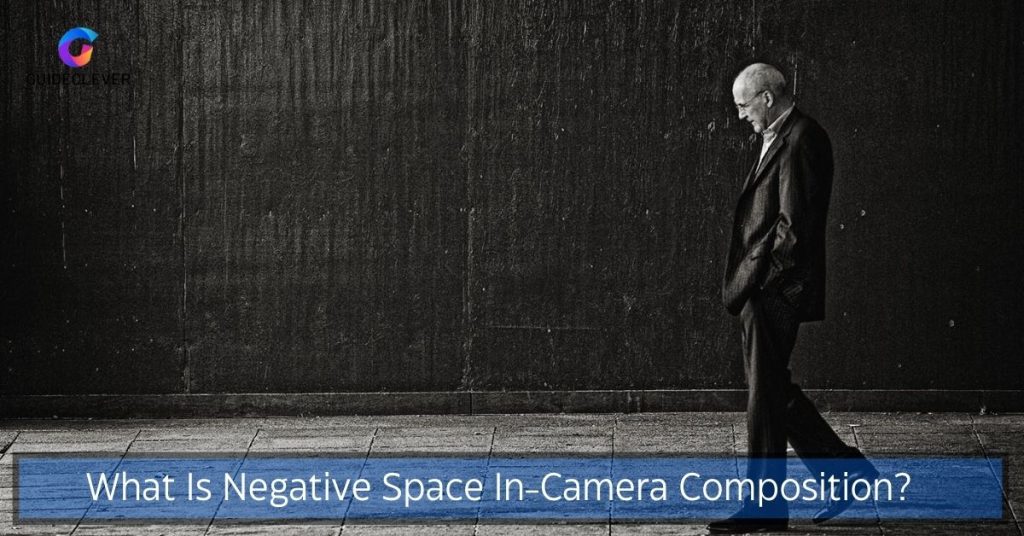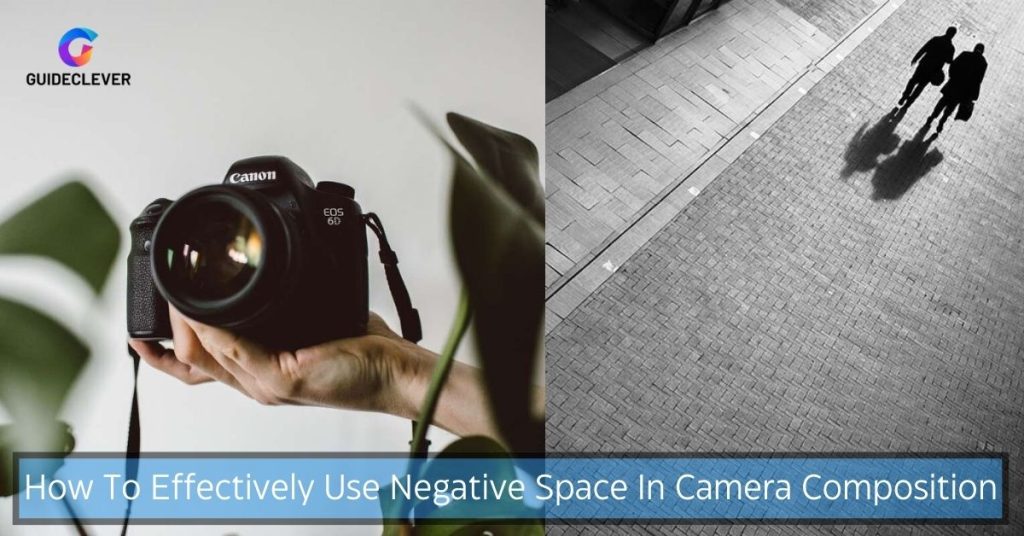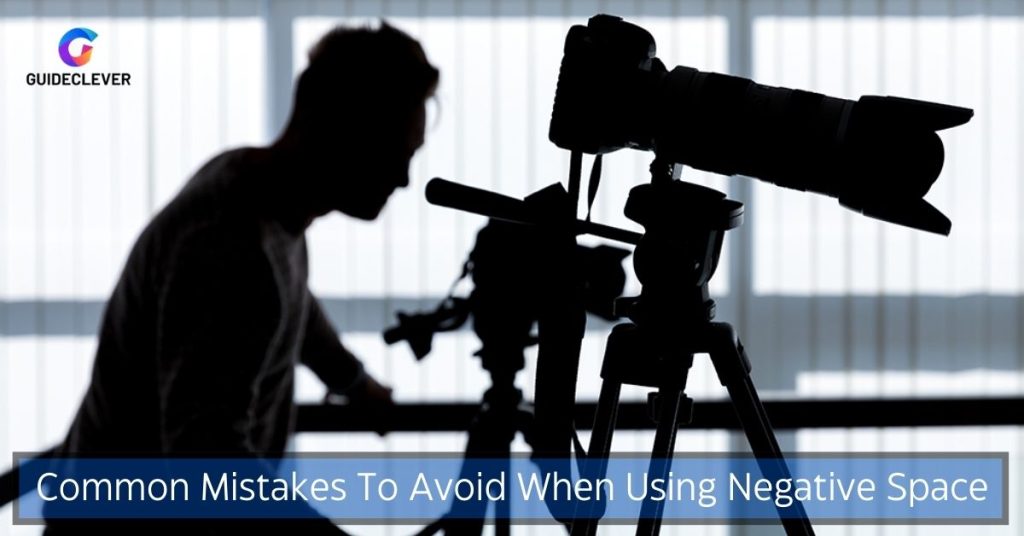Negative space is the area around your subject in a photo. It could be empty, or it might include things that aren’t the main subject of the picture. You can use negative space to highlight your subject and establish a sense of harmony and balance. Additionally, give your pictures depth and dimension.
In this post, we will discuss how to use negative space composition in the camera. At the same time, I will discuss more about the basics of negative space and the benefits of using negative space.
First of all, we will discuss what negative space is in-camera composition.
Contents
What Is Negative Space In Camera Composition?

In photography, the empty spaces surrounding the main subject of an image are referred to as negative space. It is the space that is not the primary focus but plays an equally important role in the composition. Negative space provides breathing space, balance, and a sense of visual harmony to the photograph.
Now we will know How To Effectively Use Negative Space In Camera Composition
How To Effectively Use Negative Space In Camera Composition

The region surrounding the primary subject in a proper photograph is known as negative space. It can be applied to images to add balance, attention, and emotion. Here are some tips for using negative space in-camera composition:
Identify your subject
The first step to using negative space is to identify your subject. What are you attempting to depict in your picture? Once you know your subject, you can start to think about how to use negative space to frame it and draw attention to it.
Use leading line
Leading lines are lines in a photograph that brings the viewer’s attention there. They can be man-made lines, like the lines of a structure or a road, or they can be natural lines, like the lines of the horizon or a river. When using leading lines, try to position your subject so that it is at the end of the line. This will make it easier for the spectator to focus on your subject and give the picture a sense of depth.
Use negative space to create balance
You can use negative space to balance your photographs. If your subject is large and on one side of the frame, for instance. On the opposite side, you can employ empty space to strike a balance. This will make the composition more aesthetically pleasant and well-balanced.
Use negative space to create emphasis
In your photographs, you can also use negative space to emphasize certain details. by centering your subject on an empty background. You can highlight it and make it the picture’s main subject. This is a great way to create a sense of isolation or loneliness in your photos.
Use negative space to create emotion
You may also employ negative space to add emotion to your photographs. For example, a photo of a person standing alone in a vast field can create a sense of loneliness or isolation. A photo of a bird flying against a clear blue sky can create a sense of freedom or hope. The possibilities are endless!
By following these tips, you can learn to use negative space to create appealing and resonant photos.
Next, we will know the benefits of using negative space in photography.
Benefits Of Using Negative Space In Photography
Negative space is a powerful composition technique. It can use to create striking and impactful photographs. When used effectively, negative space can help to:
Emphasize the subject
Negative space can be used to give the topic a feeling of seclusion, which might work to highlight it. This is often used in portrait photography. Especially where the subject is placed against a plain background.
Create a sense of scale
By placing a little subject against a huge background, negative space can also convey scale. This can use to create a sense of grandeur or vastness.
Convey emotion
Negative space can also use to convey emotion. For example, a large expanse of the empty sky can create a sense of loneliness or isolation. While a close-up of a flower against a plain background can create a sense of peace or tranquility.
Tell a story
You may also use negative space to tell a story. For example, a photograph of a child playing in an empty field can suggest a sense of freedom and possibility. While a photograph of a person sitting on a bench in a park can suggest a sense of loneliness or reflection.
Now we will know about common mistakes to avoid while using negative space.
Common mistakes to avoid when using negative space

Even so, using less of it in your compositions can really help. But, typical errors that can reduce its efficiency must be avoided.
Overcomplicating the composition
Sometimes, less is more. Avoid overcomplicating the composition with excessive negative space or too many competing elements. Keep the composition simple and let the subject and negative space take center stage.
Poor subject placement and framing
Ensure that the subject is placed thoughtfully within the negative space. Pay attention to the subject’s position, angle, and framing to create a pleasing composition. To determine the most effective layout, try out various places.
Ignoring the impact of lighting
In photography, lighting is crucial, as is the use of negative space. Consider how light interacts with the subject and the negative space. As well as how it can amplify or lessen their influence. Try experimenting with various lighting setups to get the desired result.
Next, we will know some (FAQ) Frequently Asked Questions.
FAQ
Should I always use negative space in my compositions?
The context and the message you want to express will determine how you use negative space. In some cases, filling the frame with the subject or other elements may be more appropriate than utilizing negative space. It’s crucial to take your composition and intended story into account.
Can negative space be applied to any type of photography?
Yes, negative space can apply to various types of photography. Especially Including landscapes, portraits, still life, and more. It’s a flexible strategy that may be modified to fit various topics and genres.
Conclusion
Negative space is a powerful tool for in-camera composition. Your photos could go from being ordinary to exceptional, thanks to it. By understanding the concept of negative space, identifying opportunities, and utilizing various techniques. You can create visually striking and balanced compositions that captivate the viewer. Experiment, practice, and let your creativity flow as you explore the world of negative space in photography.


